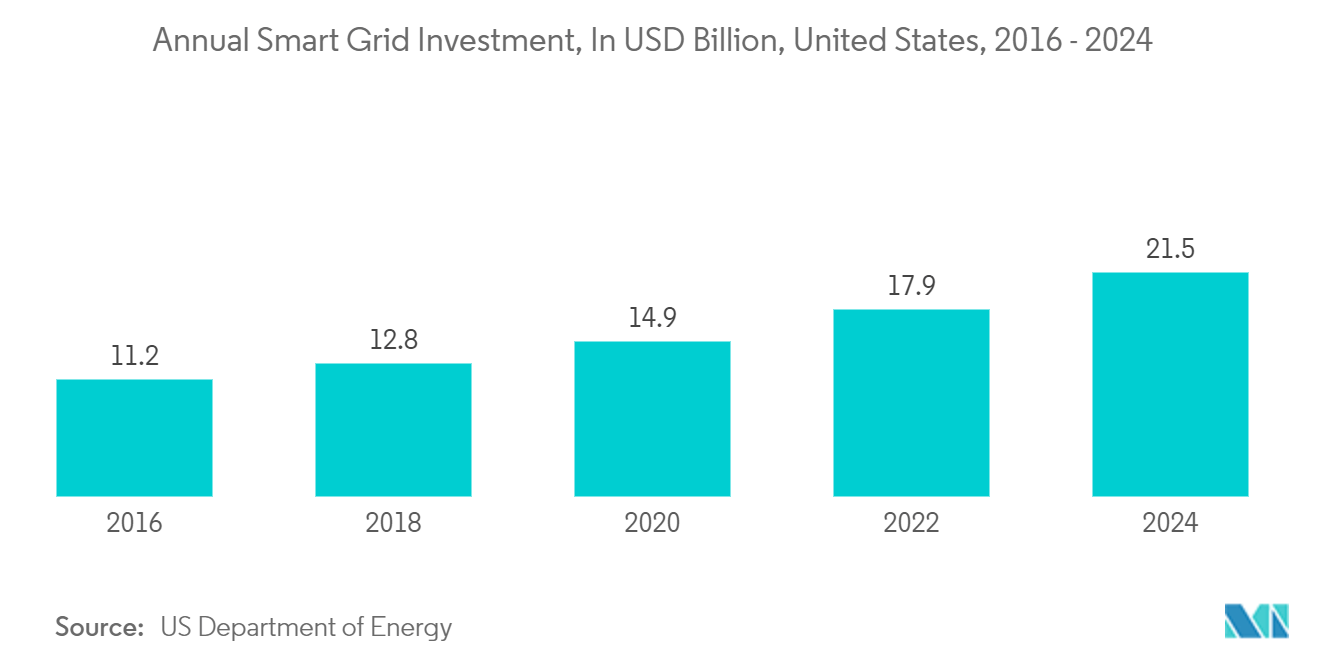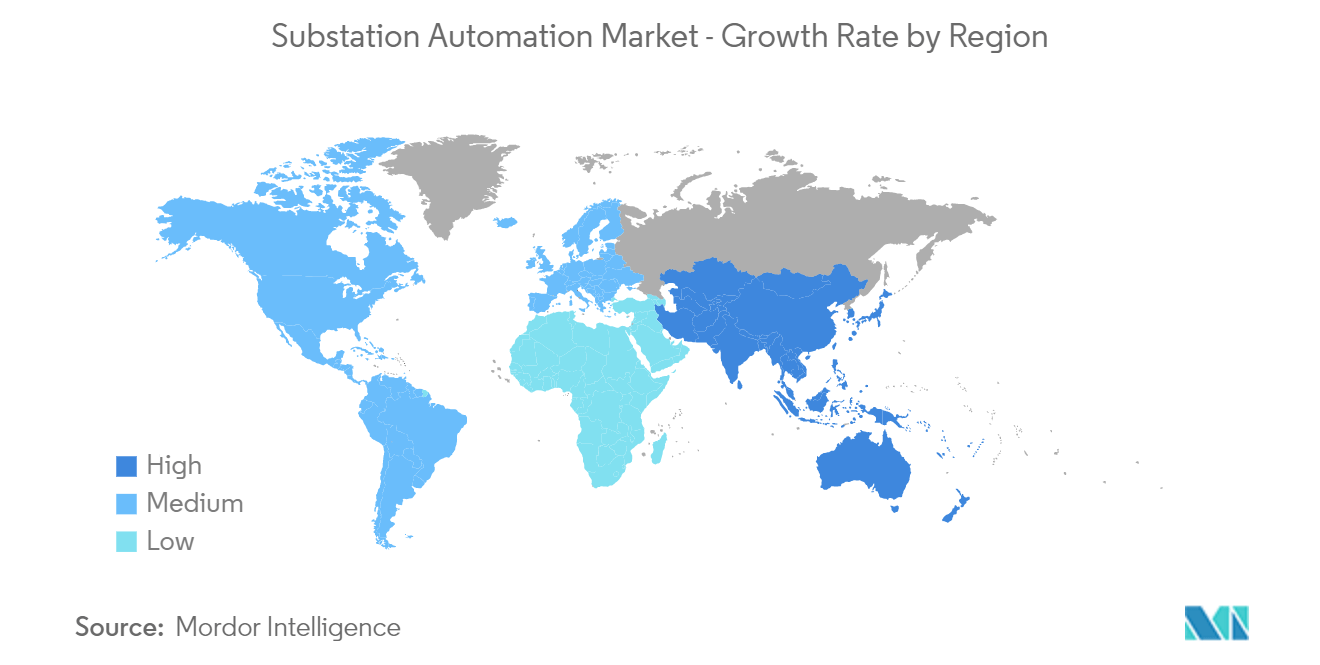Market Trends of Substation Automation Industry
This section covers the major market trends shaping the Substation Automation Market according to our research experts:
High Demands Of Smart Grid to Drive the Market Growth
- The increasing demand for efficient electricity transmission, reduced operations, and management costs for utilities, and ultimately lower power costs for consumers drive the growth of smart grids in the market. Additionally, the increasing integration of large-scale renewable energy systems and improved security, among others, are fueling the growth of smart grids in substation automation.
- Innovative grid communication technology provides predictive data and recommendations to utilities, suppliers, and customers on how best to manage power. Moreover, smart grids are deployed by applying modern technologies in substations and power networks.
- To reach the intelligent grid, one needs complete information from substations in the transmission network to analyze and manage it. The trends towards upgrading and retrofitting the old conventional substations besides new modern substations are driving the market.
- Owing to the need for upgradation and replacing an aging energy infrastructure, the smart grid is one of the best solutions used in substation automation as it allows for automatic rerouting when equipment fails or outages occur and minimizes outages, and minimizes the effects. These Grid technologies are expected to further drive the market growth for substation automation.
- In Nov 2022, National Renewable Energy Laboratory (NREL) and Sacramento Municipal Utility District (SMUD) entered into a partnership to launch an automation tool for interconnecting customer solar to the grid. NREL developed PRECISE, a device that performs fast and automated interconnection assessments and seamlessly integrates with SMUD's existing business interconnection workflow.

North America To Hold Significant Market Share
- According to the US Department of Energy, automation in switchgears (circuit breakers) and reclosers is categorized under the concept of distribution automation. It is estimated that with more than 60,000 distribution substations, 205,000 distribution circuits, and six million miles of distribution lines in operation, the United States has enormous potential for automation in its distribution network.
- The Public Utility Commission of Ohio has granted US utility AES Ohio approval to implement the first phase of its USD 249 million smart grid program that will help ensure the development of a modern, robust and efficient grid network with fewer customer outages.
- Furthermore, various industrial companies are expanding their substation with new development and partnership ecosystems, which leverages the market's growth. In Oct 2022, Potomac Edison, a subsidiary of FirstEnergy Corp. has, begun planning a new high-voltage transmission substation that will provide power for the first phase of Quantum Frederick, Quantum Loophole's 2,100-acre data center campus under development in Frederick, Maryland. The 230-kilovolt substation is expected to support the 240 megawatts of power anticipated for its first phase.
- Additionally, in September 2022, Siemens Smart Infrastructure and Shell Global Solutions International BV signed an MoU to collaborate on developing low-carbon and highly efficient energy solutions that support energy transition. The agreement will focus on projects that produce green hydrogen for industrial applications at Shell and its customers.


